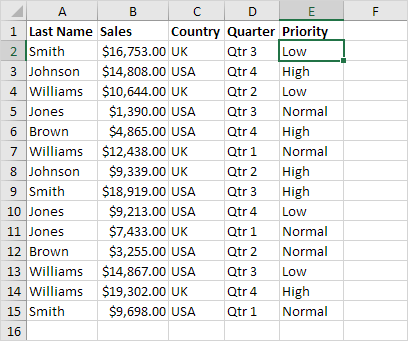Excel Tips: Sorting Your Sheet by Last Name Easily

Sorting a list by last name can sometimes be a tedious task in Excel if you're not familiar with its sorting capabilities. However, Excel provides a straightforward and efficient way to sort your data in various ways, including sorting by the last name. This post will guide you through the steps to easily sort your Excel sheet by last name, ensuring your data is organized just the way you need it.
Preparation of Your Data

Before diving into the sorting process, it’s important to ensure your data is properly formatted:
- Make sure your full names are in one column.
- If the last names are already in a separate column, your process will be simpler.
📝 Note: If your data isn't clean or is in one single column, consider splitting the full names into separate columns for first and last names.

Splitting Full Names into First and Last Names

If your data consists of full names in one column:
- Select the column containing the full names.
- Go to Data > Text to Columns.
- Choose Delimited if names are separated by a space, or Fixed Width if they are not.
- Select the delimiter (usually Space) for Delimited.
- Click Next and then Finish to split the names into separate columns.
Sorting by Last Name

Now, follow these steps to sort your sheet by last name:
- Select the range or the entire worksheet you want to sort.
- Go to Data > Sort in the ribbon.
- In the Sort dialog box:
- Choose the Column that contains the last names.
- Select Sort On as Values.
- Select the Order as A to Z or Z to A.
- Click OK to apply the sort.
🔄 Note: If you have headers in your data, make sure to check the My data has headers box to avoid sorting your header row into the data.

Advanced Sorting Options

Excel also offers advanced sorting options for more complex data structures:
- Custom Sort: Allows multiple levels of sorting (e.g., by last name, then by first name).
- Sort Left to Right: For sorting rows instead of columns.
- Sort by Color or Icon: If you’ve used conditional formatting.
To access these, click on Options in the Sort dialog box:
✅ Note: Custom sorting can be very useful when dealing with lists that need multi-level organization.
Sorting Data with Middle Names

If your data includes middle names:
- Split the names into multiple columns using the Text to Columns feature as described earlier.
- Sort by the last name column first, then by the middle name, and finally by the first name if necessary.
Undo and Review

After sorting, always:
- Check to ensure no data has been misplaced.
- Use Undo if the sorting results are not as expected.
In summary, sorting by last name in Excel can be streamlined by ensuring your data is formatted correctly. Utilize Excel's sorting features, including splitting names into separate columns, to organize your data effectively. Remember to review your data post-sort to verify the accuracy and use custom sorts for more intricate sorting needs. Excel's versatility in handling data makes it an indispensable tool for managing and organizing information efficiently.
Can I sort by multiple names at once?

+
Yes, you can sort by last name first, then by first name or middle name if needed, using custom sorting options.
What if my names have different formats?

+
Consistent formatting is key. If names are formatted differently, you might need to manually adjust or use Excel functions like LEFT, MID, or RIGHT to extract and align the last names for sorting.
Will sorting by last name change the order of other columns?

+
Yes, Excel will rearrange the entire row when sorting by a specific column to keep all related data intact.